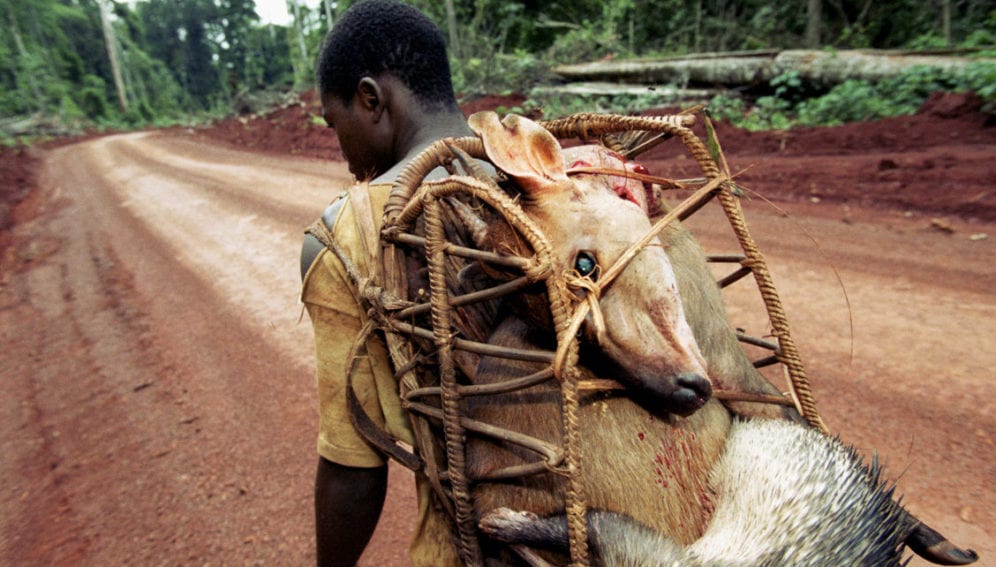By: John Bonner
Send to a friend
The details you provide on this page will not be used to send unsolicited email, and will not be sold to a 3rd party. See privacy policy.
Conservation biologists studying the effects of bushmeat hunting in Africa have criticised a UN Food and Agriculture Organization (FAO) report for making unrealistic claims about the chances of protecting wildlife from commercial hunters.
The Bushmeat sourcebook, launched to mark World Wildlife Day on 3 March, does little to create the “enlightened self-interest” among policymakers and the game industry that is vital to maintain a viable population of bushmeat species, including bats, monkeys and wild pigs, two experts told SciDev.Net.
“Can you harvest wild animals in a sustainable way? For most of the smaller species that can reproduce at a reasonable rate, the answer is probably yes.”
Richard Ruggiero, US Fish and Wildlife Service
Responding to the online guide, Richard Ruggiero, head of international conservation at the US Fish and Wildlife Service, says he doubts it will lead to the tougher regulation needed to prevent commercial operations from taking over from subsistence hunting and wiping out the most valuable food sources.
The sourcebook summarises scientific evidence for dealing with the growing demand for bushmeat in Africa, Latin America and South-East Asia, which has been fuelled by rising food prices resulting from both economic and environmental changes. But the trade has become increasingly globalised, with bushmeat smuggled into China, Europe and North America.
“Can you harvest wild animals in a sustainable way? For most of the smaller species that can reproduce at a reasonable rate, then the answer is probably yes,” says Ruggiero. “But that is only if the meat is being consumed in the local market. As soon as you let in commercial interests, then that is the kiss of death.”
The guide was produced by the FAO’s Collaborative Partnership on Sustainable Wildlife Management, an alliance of governments and NGOs that advises on using biodiversity to benefit human food safety and security.
Bushmeat is a growing focus of research attention after it emerged that the Ebola virus responsible for the recent outbreak may have first passed to humans from fruit bats hunted in the West African jungle.
The sourcebook suggests ways to address the challenge of feeding local people while maintaining a sustainable population of bushmeat species. It also advises on preventing damaging knock-on effects when species crucial to the bushmeat food chain die out due to hunting and other human activities.
Encouraged by a trend towards public forest management that has shown good results in several South-East Asian states, the sourcebook proposes transferring forest ownership from the state to regional bodies. It also promotes the concept of rearing wild hoofed animals on game ranches and supports tougher penalties for illegal commercial hunting.
But the guide does not include any calls for more research into how much bushmeat could sustainably be removed from different environments, and how this could be achieved.
“What is missing is the institutional and organisational angle: how we can incentivise people and overcome issues of corruption and so on,” says Marcus Rowcliffe, a researcher at the Zoological Society of London, United Kingdom, who has been researching the bushmeat trade and its effects on forest ecosystems in West Africa. “The crucial issue is to design a good regulatory system that can cope with the realities of the situations we are working in.”














